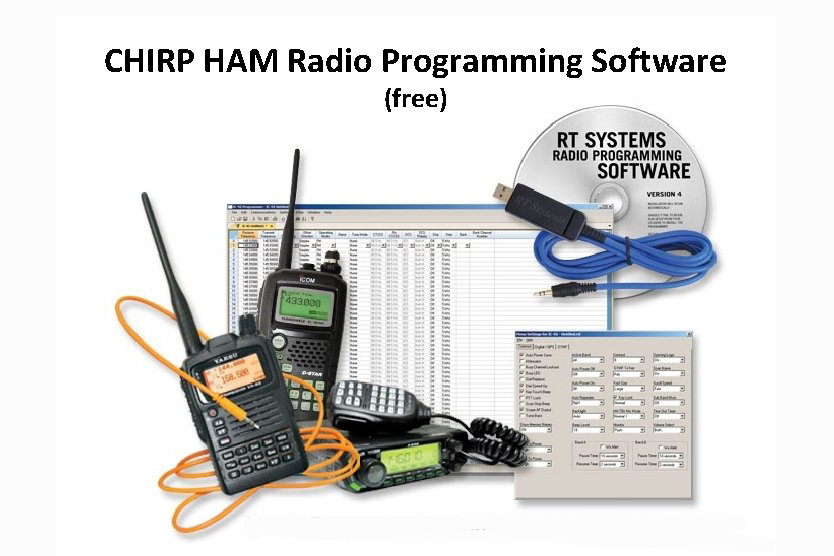In the world of amateur radio, programming your transceiver efficiently and accurately is paramount. One of the most trusted tools in the radio community for this purpose is CHIRP radio software. Designed for ease, compatibility, and robust functionality, CHIRP has become the go-to option for ham radio enthusiasts, emergency responders, and tech-savvy adventurers.
This comprehensive guide explores everything you need to know about CHIRP radio software — from its features and compatibility to installation, usage, common troubleshooting issues, and advanced tips.
What is CHIRP Radio Software?
CHIRP is a free, open-source tool for programming amateur radios. Developed and maintained by a community of radio enthusiasts, CHIRP supports a wide array of radio models and manufacturers. Its main function is to allow users to upload, download, and edit channel information on their radios through a user-friendly interface.
Why Use CHIRP?
. Cross-Platform Compatibility
CHIRP is compatible with Windows, macOS, and Linux, making it highly versatile.
. Wide Radio Support
CHIRP supports popular brands like Baofeng, Icom, Kenwood, Yaesu, and many others.
. Streamlined Programming
Instead of entering frequencies and settings by hand using radio buttons, CHIRP allows users to enter them quickly on a computer and upload them directly to the radio.
. Open Source and Free
CHIRP is completely free to use and maintained by volunteers. This means no subscription fees or costly licenses.
. Backup and Restore Capabilities
Users can save their radio’s configuration and restore it if settings are lost or if they need to program another radio with the same channels.
CHIRP-Supported Radios
CHIRP supports a vast list of radios from many manufacturers. Some of the most commonly used include:
- Baofeng UV-5R series
- BaoFeng BF-F8HP
- Kenwood TH-D74A
- Icom IC-92AD
- Yaesu FT-60R
CHIRP maintains a live list of compatible radios on its official website.
Installing CHIRP
. Download the Software
Visit the official CHIRP website (https://chirp.danplanet.com/projects/chirp/wiki/Home) to download the latest version for your operating system.
. Install the Driver
Some radios require USB-to-serial drivers to communicate with your computer. These drivers are often based on the Prolific or FTDI chipsets.
. Launch CHIRP
After installation, connect your radio to your PC via the programming cable, and launch the application.
Using CHIRP to Program a Radio
Connect Your Radio
Use the appropriate USB programming cable and connect your radio to your computer.
Download from Radio
Select your radio’s make and model from the CHIRP interface. Click on “Radio” > “Download from Radio” to retrieve your radio’s current configuration.
Edit Channels
Add or modify frequency, offset, tone, and other details in the spreadsheet-like interface.
Upload to Radio
Once editing is complete, click “Upload to Radio” to send the new configuration to your device.
Save the File
Always save your edited image for backup purposes.
Advanced Features
. Importing from Data Sources
CHIRP allows importing channel data from sources like:
- RepeaterBook
- RadioReference (with premium account)
- CSV files
. Cloning Configurations
Perfect for emergency teams or clubs needing to program multiple radios identically.
. Custom Memory Banks
Organize channels into specific banks for easier navigation.
Common Problems and Fixes
. USB Driver Errors
Ensure that the correct driver is installed. Avoid counterfeit Prolific cables.
. Radio Not Responding
Check COM port settings, cable connection, and ensure radio is powered on.
. Version Compatibility
Use the latest CHIRP build to ensure full support for your radio model.
Tips for First-Time Users
- Start by downloading data from your radio to avoid overwriting crucial settings.
- Label your channels clearly for easier identification.
- Save different configurations for different use cases (e.g., hiking, emergency, daily use).
- Join forums and communities for support and shared config files.
CHIRP Community and Support
CHIRP has an active user base and support forum. The bug tracker and wiki provide excellent documentation, and the software is frequently updated with new features and radio support.
Forums such as Reddit’s r/amateurradio and the CHIRP mailing list are great places to ask questions and share insights.
Conclusion
CHIRP radio software remains a must-have tool for anyone in the amateur radio community. Its flexibility, broad compatibility, and open-source model make it invaluable for both new and experienced users. Whether you’re managing one device or an entire fleet of radios, CHIRP simplifies programming, saving you time and ensuring accuracy.
By leveraging the power of CHIRP, users can maintain organized, effective communication setups ready for daily use, emergency response, or hobbyist exploration.
